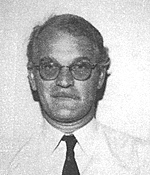Among the many confusing aspects of the Spanish Civil War are determining who supported which side and what they should be called. Both sides included antagonistic elements: fascists and Catholic traditionalists on one side, anarchists and gentlemanly republicans on the other.
The Nationalists started using that name soon after they had rebelled against their government. They did not like to be called Insurgents or Rebels, though that is exactly what they were. They represented themselves as the true Spaniards, the real legitimate government. They followed this logic to a grotesque extreme: over 100,000 people were executed for siding with the Republic, and in most cases the formal charge was "rebellion." Their enemy called them fascists, which was fairly accurate.
The only political coloration of the Nationalist side after General Franco came to dominate it was provided by the Spanish fascist party, the Falange. Combining anticommunism, radical social ideas, and extreme patriotism, fascism had become fashionable in Europe during the 1930s. However, the Falange was a facade, used only to involve the large number of Spaniards who had formerly been attracted to various leftist groups. The egalitarianism and socialist programs of fascist theory had no place in Franco's hierarchical and capitalist Spain.
The various monarchist groups in Spain supported the Nationalists, as did the Catholic Church. The Church called the antigovernment forces "crusaders" and excused or denied the atrocities they committed. The importance of the support given by the Church to the Nationalist cause cannot be exaaaerated. This support made what was really an army revolt against an elected government seem legitimate. In the late 1970s, in an open letter to the Spanish people, the Spanish Catholic Church apologized for its activities during the civil war.
Some monarchists supported the return of Alphonso XIII or his son. The largest group of monarchists, the Carlists, wanted a less liberal monarchy. They wanted all religions other than Catholicism banned and an end to any sort of democracy. Their militia, the Requete, was used as shock troops in the later twothirds of the war.
The other side called themselves Republicans or Loyalists, neither of which describes many of the groups that supported the Republic. Certainly the anarchists were neither Republican nor loyal to the government - they opposed the rebels as enemies of the working class. Their enemy called them "Reds," an appropriate designation for the orthodox, Moscowaligned Communist parties, the radical Socialists, the followers of the dissident Communist leader Trotsky, and the anaFchists. However, the term certainly could not be applied to the bourgeois parties, moderate Socialists, and various separatist groups, which taken all together made up the majority of the Republic's supporters.
Furthermore, in large parts of Spain, regional loyalties transcended politics. The Basque provinces were generally conservative and probably Spain's most Catholic area. The area had voted solidly conservative in the 1936 elections. But the Nationalist's complete rejection of the principle of regional autonomy put the Basques on the side of the radical Republic. Catalonia also had an intense secessionist sentiment. In the hectic early days of social revolution in the late summer of 1936, Catalan extremists destroyed roads and railroads in order to separate their homeland physically from the rest of Spain.
 John J. Gee is the co-designer (with Jeff Millefoglie) of a Spanish Civil War game, "No Pasaran!". His articles have appeared in numerous magazines. He has a degree in history from San Francisco State University and has been a wargamer for nearly 30 years. John and Jeff are currently working on the Europa game For Whom The Bell Tolls.
John J. Gee is the co-designer (with Jeff Millefoglie) of a Spanish Civil War game, "No Pasaran!". His articles have appeared in numerous magazines. He has a degree in history from San Francisco State University and has been a wargamer for nearly 30 years. John and Jeff are currently working on the Europa game For Whom The Bell Tolls.
Spanish Civil War
-
Introduction and Background
The First Six Months
Foreign Involvement
War in the Summer of 1937
Politics and The Aragon Front
The Czech Crisis and End of War
Bibliographical Note
Who Was Who in the SCW?
Back to Europa Number 9 Table of Contents
Back to Europa List of Issues
Back to MagWeb Master Magazine List
© Copyright 1989 by GR/D
This article appears in MagWeb (Magazine Web) on the Internet World Wide Web. Other military history articles and gaming articles are available at http://www.magweb.com